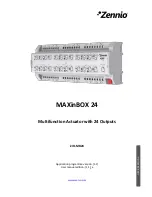
Electrical aspects for the companion solution
44/108
5.5
SYNC0/1 signals
The following SYNC signals are available:
·
SYNC0
·
SYNC1
They can be connected with three-pole connectors such as as described in
the figure below.
Figure 21: SYNC connectors
The SYNC signals have LVTTL level.
Possible destruction of the device due to high current!
A maximum load of 6 mA may not be exceeded!
Make sure that outputs never drive against each other! Two outputs that
drive against each other cause a too high current and result in device
damage.
This situation can happen for example if the host system has an output
signal connected to SYNC0 and a firmware is loaded that uses SYNC0 as
output too.
It is also strongly recommended to keep the cable length for the SYNC
signals below 50 mm and to take EMC aspects into account. In general,
both SYNC signal lines can be used as input or output.
Note:
A PROFINET IO certification for PROFINET IRT mandatorily
requires that the device provides the synchronization signal
(SYNC0), in order to allow connecting an oscilloscope.
The host system (i.e. the PROFINET IO product you are designing)
must provide the SYNC0 signal! For this purpose, connect the
SYNC0 signal and ground of the system connector of the NRP H90-
RE with a well accessible 2-pin connector.
The pins of the SYNC interface are shared with some MMIO pins.
Pin
Name
Shared with
7
SYNC0
MMIO16
8
SYNC1
MMIO17
Table 15: Pin assignment to SYNC interface
The following table shows the meaning of the SYNC signals for the real-
time Ethernet protocols currently offering SYNC signal support.
netRAPID 90 | Design guide
DOC190601DG01EN | Revision 1 (Draft 10) | English | 2019-09 | Preliminary | Public
© Hilscher 2019
















































